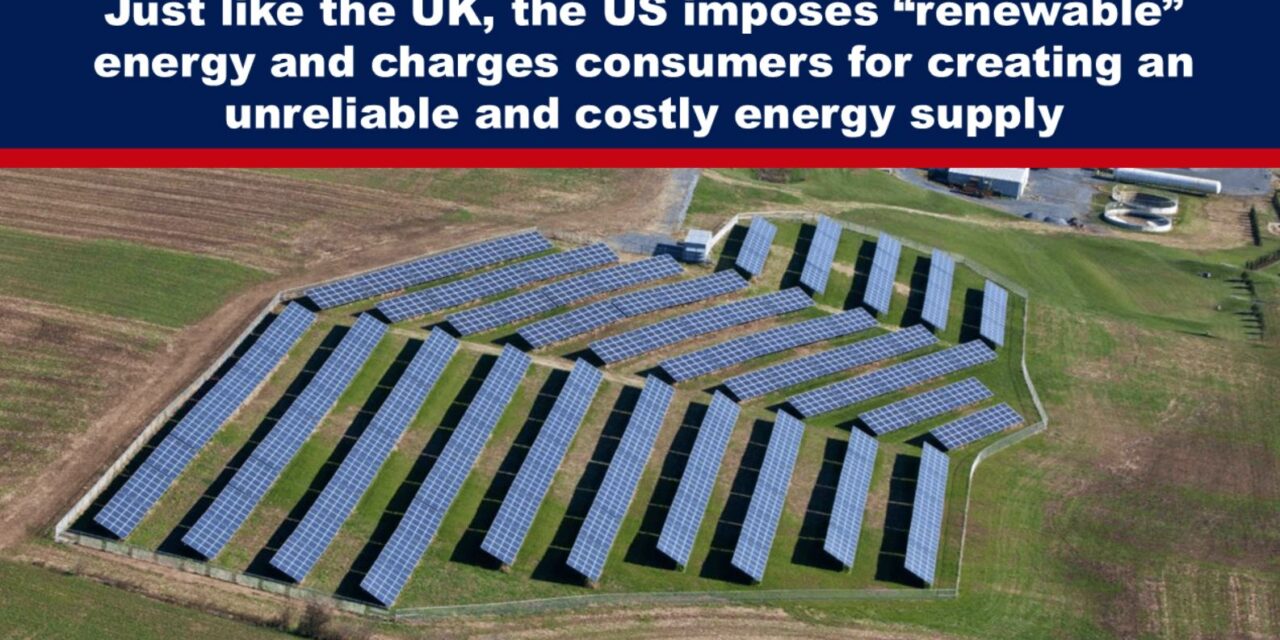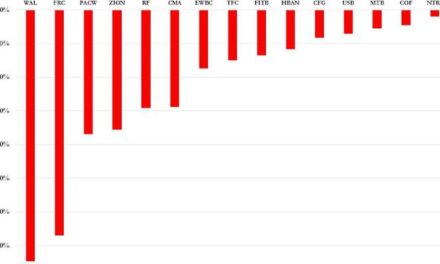Pennsylvania-New Jersey-Maryland Interconnection – the largest regional transmission organisation in the United States, covering all or part of 13 states – has seen a tenfold hike in auction prices for “guaranteed” energy supply.
The grid’s reliance on renewables has created a juggling act, with a backlog of projects waiting for transmission lines and grid storage, leading to higher costs and reduced reliability for consumers.
It appears to be a copycat of the UK’s NESO scam. Is it just a coincidence that a similar plan is being followed on both sides of the Atlantic? Or are we seeing the rollout of a global plan?
As we’re reading Willis Eschenbach’s explanation of the Pennsylvania-New Jersey-Maryland Interconnection (“PJM Interconnection” or “PJM”) scheme, bear in mind that it is not only being implemented in the USA. The equivalent in the UK is the National Energy System Operator (“NESO”); as you read through this article, the similarities will become apparent.
NESO is the publicly owned, “independent” body responsible for managing and planning the United Kingdom’s electricity and gas networks. It is owned by the Department for Energy Security and Net Zero (“DESNZ”), regulated by another UK government department, Ofgem, and funded through consumers’ energy bills.
Just like PJM described below, NESO does not own any transmission assets; it simply balances energy output with consumption and drives the Government’s destructive race towards the “net zero” bottom.
NESO’s primary statutory duties are to help the government meet its net zero targets, ensure security of energy supply for consumers, and promote the efficient and economical transmission and distribution of electricity and gas. Its responsibilities include real-time balancing of the electricity grid, managing the queue for new electricity projects, and producing a Strategic Spatial Energy Plan (“SSEP”) to map the optimal locations and types of energy generation and storage needed to achieve the “clean” power target by 2030. NESO also works to accelerate the deployment of “renewable” energy, collaborating closely with Great British Energy.
For providing their services to the Government, NESO includes a charge on our electricity bills under “network costs.” Its charge for balancing supply and demand accounts for around 2% of the average household electricity bill. Two charges account for just under 50% of our bills – 25% for network costs, including NESO’s charges, and 25% for environmental and social obligation costs.
NESO explains what “environmental and social obligation costs” are. They are costs “paid to larger energy suppliers which have to help pay for government energy policies. These costs cover schemes such as to support energy efficiency improvements in homes and businesses, to help vulnerable people and encourage take-up of renewable technology.”
So around 27% of our monthly energy bills are directly related to NESO and Mad Miliband’s net zero scam.
Further reading:
- Ed Miliband’s “independent” advice on “clean power” scam
- Ofgem increases energy price cap; expensive energy is due to “renewables” and “net zero” policies are the primary cause of deindustrialisation of the UK
- 44% of the increase in UK energy bills is due to net zero
The Road To Hell Is Paved With Green Intentions
By Willis Eschenbach, as published by Climate Realism on 19 August 2025
Climate Realism Editor’s Note: The media has been talking extensively about New Jersey Gov. Phil Murphy’s (D) energy plan, saying that it will do little if anything to “save the planet.” It is a bad idea and will, in fact, unnecessarily raise electricity prices for millions. A few headlines include: ‘Green New Headache: Dems flee gov’s green ‘Energy Master Plan’ as election approaches’, ‘Insane energy policies are set to burn Democrats in New Jersey, New York’, and ‘What Makes Jersey Run: Your growing energy bill is a growing issue in the big governor’s race’.
Sometimes you can’t help but marvel at how much we’re all willing to pay for the illusion of “green progress.” New Jersey decided – like half the country – that climate purity would be achieved by wind turbines, solar panels and endless press conferences declaring victory against bad old fossil fuels. But someone forgot to run the numbers, and now the bill arrives, with a little note attached: “Due immediately. No refunds. See: your monthly utility statement.”
Let’s start with the latest funhouse mirror: PJM’s capacity auction. You’ll see the acronym “PJM” all over any story about electricity markets, grid drama and ratepayer headaches up and down the Eastern seaboard. So what actually is PJM – besides an endless font of regulatory press releases and auction results?
PJM, when it’s at home, stands for Pennsylvania-New Jersey-Maryland Interconnection. Despite the name, it’s not just those three states anymore. It’s now the largest regional transmission organisation (“RTO”) in the United States, covering all or part of 13 states (think New Jersey, Pennsylvania, Ohio, Virginia, Illinois, etc.) plus Washington, D.C., stretching from the rust belt to the edge of the South. Its territory spans 65 million people – nearly one-fifth of the country – so what happens in PJM’s control room often decides whether your air conditioner hums or whimpers in August.
But PJM isn’t a power company. It owns no transmission lines, no power plants, no substations. It’s the air traffic controller of the grid – coordinating the flow of electricity across 88,000 miles of high-voltage transmission, managing more than 1,400 power generators and pulling the levers of gigantic energy marketplaces where utilities buy the electrons they deliver to your living room. When you hear about capacity auctions, day-ahead markets, or “grid reliability events,” PJM’s the referee moving pieces around the giant chessboard of supply and demand.
PJM works around the clock – like a cross between NASA’s control room and the pit bosses in Vegas who used to give me the hairy eyeball – tracking generation, monitoring demand in real-time and dispatching power plants to keep everything balanced minute to minute. They’re charged (pun intended) with making sure the lights stay on for hospitals, factories, schools and your midnight TikTok habit. Their holy grail? Reliability and low cost, achieved by – ideally – always calling on the cheapest available source of power and preventing rolling blackouts when the weather or a misbehaving power plant throws a wrench in the works.
Importantly, PJM doesn’t serve customers directly or send you a bill. Your utility – PSEG, JCP&L, Atlantic City Electric and the like – buys power at these massive auctions and passes the costs through to consumers. When PJM’s auctions spike, your rates spike. When the grid creaks due to “renewable integration,” “data centre demand” or “retiring nuclear plants,” PJM rings the alarm bell and shuffles the mix, often asking utilities (and by extension, you) to pay more for reliability.
So next time you see “PJM” in the news, remember: it’s not a company, it’s not a government agency, and it’s not run by mad scientists or Wall Street quants. It’s the big, complicated, non-profit grid manager whose job is to juggle electrons, forecast tomorrow’s peaks, referee the markets, and – hopefully – keep your dinner out of the dark. If they cough or sneeze, everyone from New Jersey to Ohio checks their fuse box – just to be safe.
Now for years, the PJM auction price for “guaranteed” power – the kind that keeps your lights on after sunset – hovered around $29.92 per megawatt-day. That number just jackknifed straight through sanity’s guardrails and into $329.17/MW-day for 2026. That is a tenfold hike.
(Note that the unit of dollar per megawatt-day reflects the market’s annual capacity payment to generators for guaranteeing their availability, regardless of actual energy delivered. The figure is not meant to be directly converted into an energy unit ($/kWh) for retail bills, as it covers standby and reliability commitment, not dispatched energy.)
Utilities don’t swallow those costs; they pass them through like hot potatoes, and suddenly, one fifth of your bill is just “capacity” – meaning “back-up for things that don’t work when it’s cloudy, calm or 5 pm.”
Why the spike? The grid’s been forced into a juggling act worthy of Cirque du Soleil. New Jersey, like every other “green leader,” retires gas plants and nuclear units as a matter of policy, then pins its hopes on renewables that need transmission lines and grid storage which aren’t built yet. There’s a 143 gigawatt backlog – yes, gigawatts, yes, backlog – in PJM’s project queue, most of it wind and solar waiting for bureaucrats, lawsuits, regulatory “streamlining” and continued consumer stupidity. In theory, the state could bathe in zero-carbon glory, but most of these projects are frozen in the interconnection swamp, with offshore wind delayed at least two years and solar farms bottled up behind transmission shortages.
Now toss in the wildcard: the AI/data centre gold rush. What used to be a footnote on the demand page now accounts for 4% of total load in the PJM region – with a straight trajectory to 12% before 2030. Nearly 70% of this year’s price hike? Blame the server farms, chewing through terawatts so your robot butler can hallucinate about cat videos. PJM’s own models now admit overall demand growth has tripled, and may hit 5%/year soon – while new “clean” supply trickles in, stuck on the rails.
And what does all this cutting-edge renewable ambition actually mean for you? By August 2025, residential rates have spiked to 19.74¢ per kWh. The average bill is now $129/month – 20% over the national average, with low-income families choosing between groceries and the privilege of running the water heater. Business owners are seeing $2,800 monthly charges for mid-size operations.
The utility companies will offer you energy-saving tips, maybe a rebate on a smart thermostat, but explain – very quietly – that they’re just forwarding the PJM costs from upstream. Auction results, demand modelling, global fuel instability, renewable delays: all rolled into your statement, no line-item for “wishes.”
Grid modernisation? Sure. The Board of Public Utilities rewrites some rules, pushes for “streamlined” solar connections, and promises to bring everyone into the clean energy fold. But each improvement needs billions for transmission upgrades, “enhanced reliability standards” and, inevitably, more interconnection paperwork, which brings you … more delays and higher costs.
All the while, billions in clean energy projects (offshore wind, storage farms, hydrogen pilots) are being cancelled nationwide – $14 to $22 billion in 2025 alone – due to political uncertainty, people looking hard at the real costs of “renewables,” vanished tax credits and the occasional leadership shuffle. Meanwhile, moratoriums, regulatory drama and lawsuits ensure that, for every “transformative” wind project launched, two more are killed or delayed.
And here’s the kicker: while the advocates chant that “solar and wind are the cheapest forms of energy,” the real world keeps offering up rate hikes, capacity crises and bills that read like a ransom note.
What we’re buying isn’t reliability or affordability – it’s a perpetual promise of future savings, forever in the next quarter, if we’re lucky. So, New Jersey residents get stuck paying for capacity the grid can no longer guarantee, backups for power sources that quit at sunset and transmission lines waiting for someday.
The folly? Instead of getting affordable “clean” energy, ratepayers are underwriting a circus of subsidies and speculative projects whose delays and failures are a matter of public record. When your rates spike, remember: it’s the cost of betting the farm on renewables dependent on fickle weather, bureaucratic magic and a market that values wishful thinking over working electrons.
And when politicians tout the beauty of renewables as prices climb and climb, just ask: how much does hope cost, per kilowatt-hour? Because in New Jersey, you’ll find out on your next power bill, whether you asked for it or not.
My best to everyone.
Source: https://expose-news.com/2025/08/20/charges-consumers-for-renewable-energy/
Bitchute: https://www.bi,tchut,e.com/channel/YBM3rvf5ydDM/
Telegram: https://t.me/Hopegirl587
EMF Protection Products: www.ftwproject.com
QEG Clean Energy Academy: www.cleanenergyacademy.com
Forbidden Tech Book: www.forbiddentech.website













